The next few times in the pond, I waded as fast as possible through the water, with the camera down and as far in front as I could hold it, in front of the mud cloud. Maybe one day I will have a boat, which would make things much easier, but for now this was plenty good enough to show me what I wanted to know.
When it first grows up from the bottom, the
Crassula seems to put up a single long slender stem.
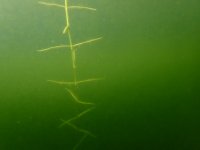
Finding a single plant growing on it's own like that was rare, usually there were many together, all on their way to the surface.

When I pulled at an individual stem, if I was careful and didn't pull too hard, it would often come up out of the mud complete with root, so I am guessing these are all individual plants, rather than multiple shoots from a common root system.
Once they get near the surface, they put out more side shoots that start to tangle with one another, making a tough floating mat.
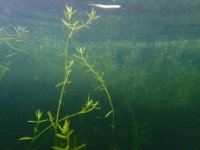
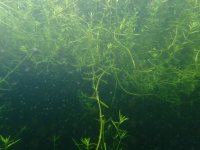
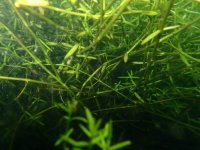
If a stem is cut low down in the water, it occasionally dies back, although most seem to carry on growing, but in a different manner. Within a few days they start to produce more side stems, not just from where the cut is, but from lower down the stem too. These are not very clear pics, but below you can just make out the new shoots that look a lighter color than the rest of the plant. This soon makes a much bushier plant, so I think that's telling me I need to avoid cutting and try and get the entire plant out if possible.
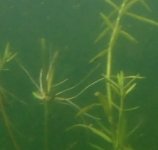
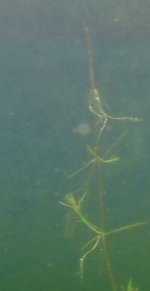
The most remarkable aspect of
Crassula, compared to our other native water plants, is that it keeps on growing all year round. In the future I intend to take more underwater pics to try and get a better feel for how fast it grows at different times of year. For this summer it had already grown way too far, I just had to come up with a way of getting out what had already grown, if possible taking it out complete with it's roots.








